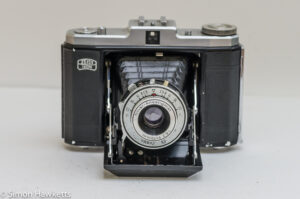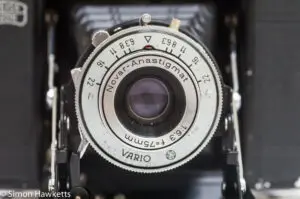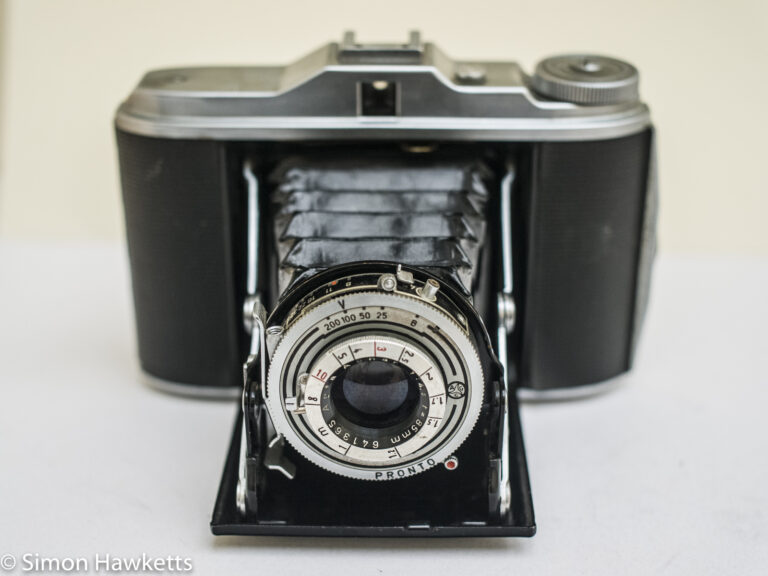Zeiss Ikon Nettar II type 517/16
This post describes a Zeiss Ikon Nettar II folding camera which was made in about 1949 and takes type 120 film. I’ve identified it as type 517/16 by referring to the camera wiki site.
Zeiss Ikon Nettar II Images


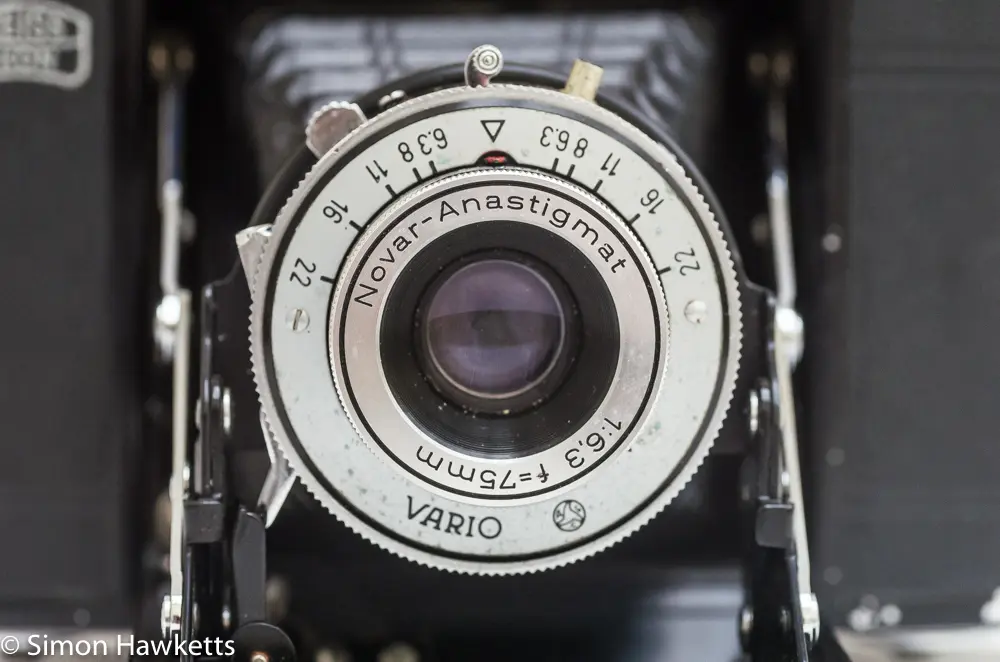
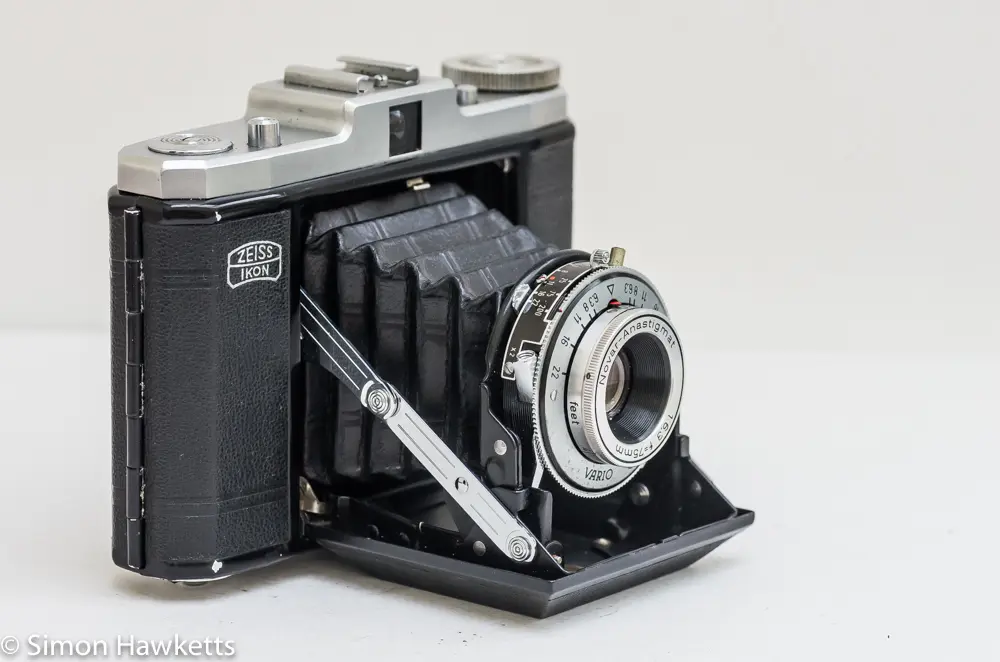
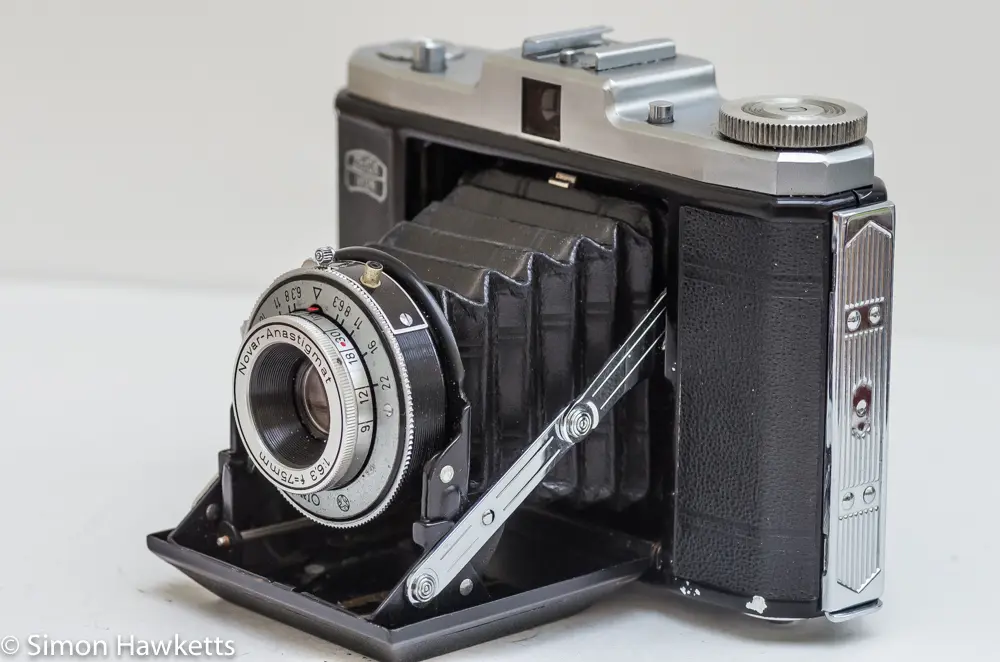
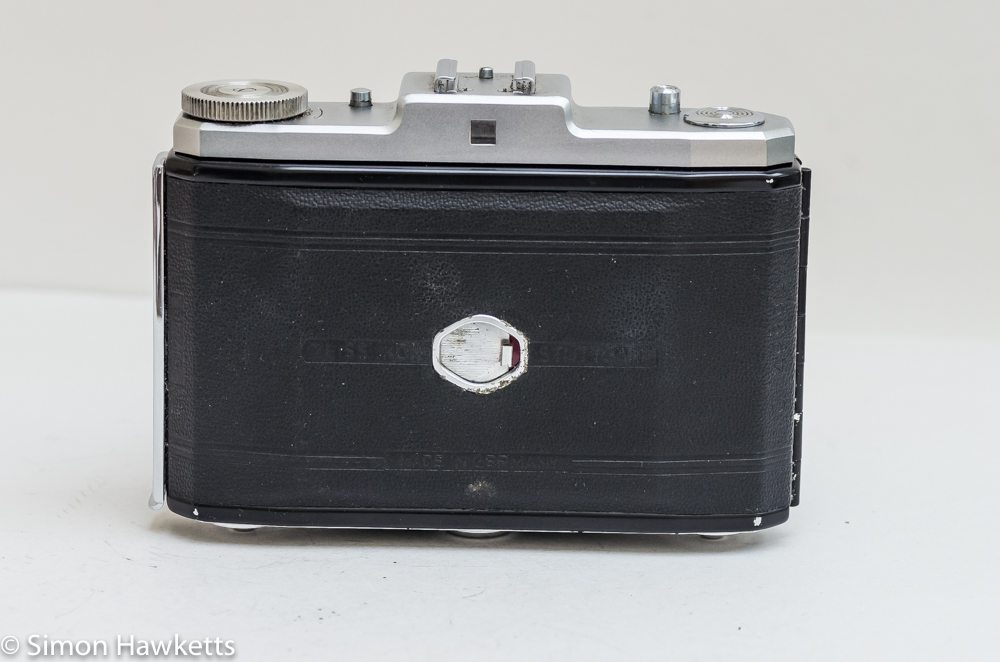
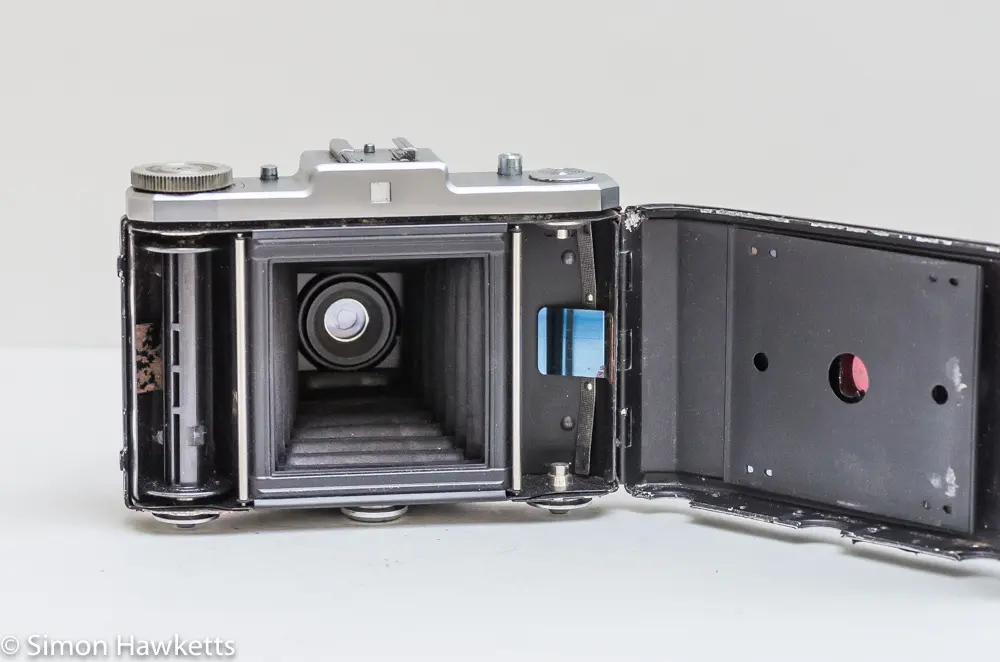
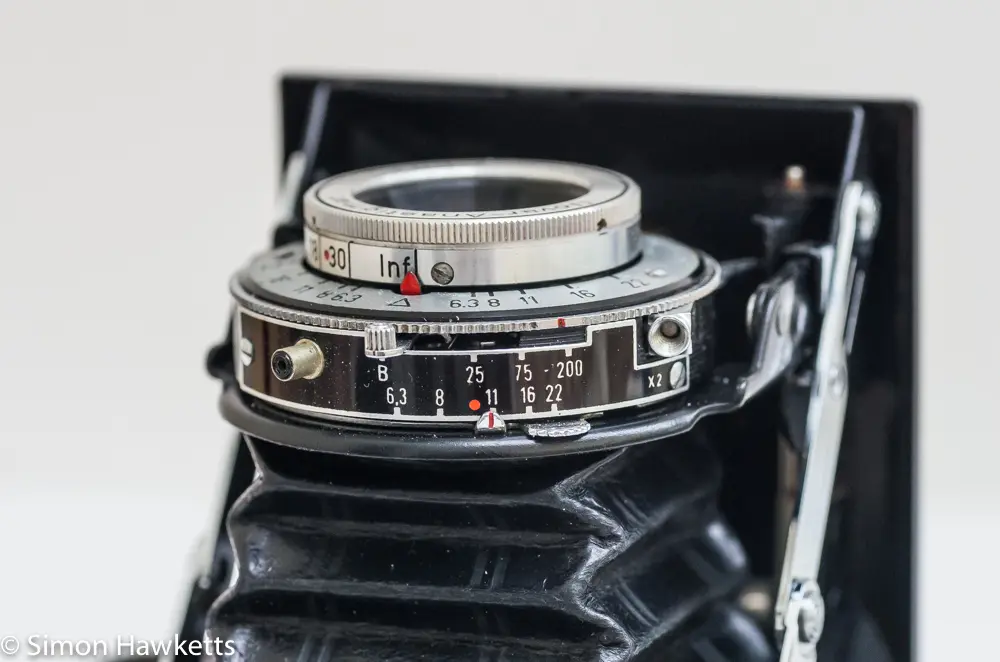
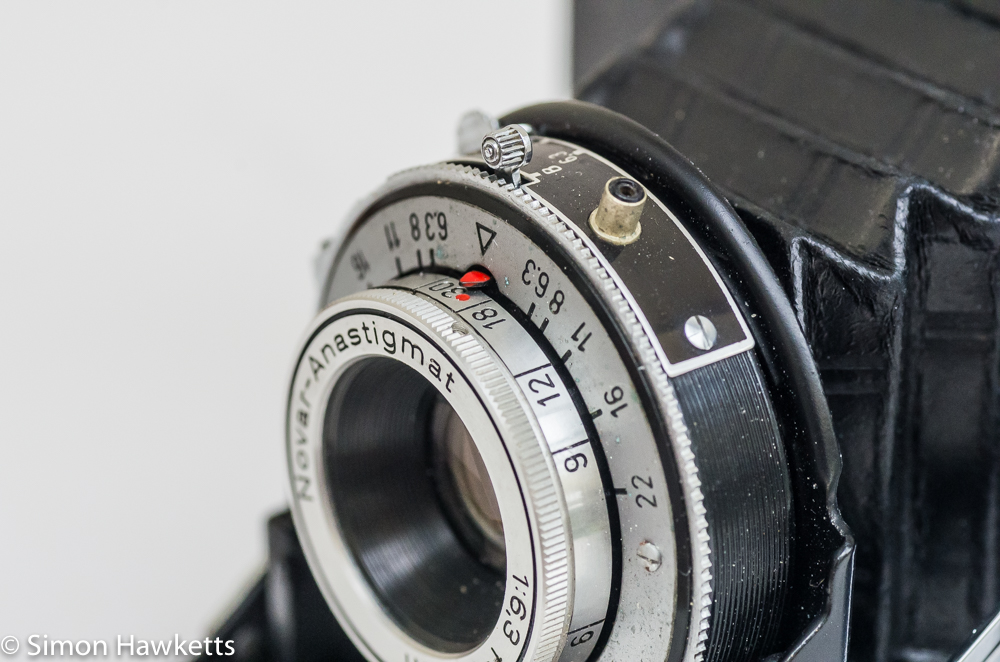
My Zeiss Ikon Nettar II Camera
I acquired this camera in a slightly different way than I normally find cameras because I bought it from a charity shop rather than from eBay. I suspect that the price I paid of £5 was also slightly different from the price I would have paid if I’d bought it from eBay, since the going rate for this camera from that source seems to be between about £10 and £30.
The condition of the camera seems to generally be quite good. There are a few patches of rust on the inside of the lens door, a few bits of paint missing and the back door hinge has a small amount of white corrosion on, but all the photographic controls work well. The shutter works on each of its speeds, the aperture has a nice smooth action, and the linkage between the shutter release button on the top plate of the camera and the actual shutter works well. Most importantly, the bellows seem to be intact, lightproof and flex without any cracking or light leaks.
Along with the camera I also received the small paper handbook which was supplied with it, and a leather fold up case. Unfortunately, both the case and the handbook have seen much better days and are rather tatty now.
Zeiss Ikon Nettar II Description
The Nettar series of cameras were made for a long time and covered a wide range of models and film formats. The very first Nettar model, made in 1934, was the 510 version which created negatives 6 cm x 4.5 cm and therefore took 16 pictures on a roll of 120 film. There were also models which took negatives 6 cm x 9 cm and others, like the model I have which took 12 square pictures of 6 cm x 6 cm. Over the years, various different shutters and lenses were used as the camera was updated and improved.
The 517/16 model is a fairly basic design with a 75 mm Novar-Anastigmat lens with a maximum aperture of f/6.3. That sounds very slow by today’s standards, but the accompanying Vario shutter has quite slow speeds of 1/25, 1/75 & 1/200sec + a bulb setting.
The camera is synced for flash, although there is no setting for electronic flash – at the time when this camera was made in 1949 electronic flash was a thing of the future. Taking flash pictures involved using flash bulbs mounted in a flash gun and connected by a cable to the socket on the shutter.
Focus is achieved by using the scale on the front lens element which can be screwed in and out. Either the photographer used an optional rangefinder or, more likely just guessed the distance. The focus scale is in feet and has markings from infinity down to about 3 feet.
To compose the picture, the viewfinder is a simple viewer above the lens, but one useful feature is that you can clearly see the shutter cocking lever in the bottom of the viewfinder, so it is possible to check that the shutter is cocked before taking the picture. Yes, the shutter needs to be manually cocked before the picture can be taken.
This is an interesting camera, and I will probably run a film through it to see how it performs since the name Zeiss Ikon has a reputation for excellent quality so it would be nice to see if the reputation is well founded.
Zeiss Ikon Nettar II 517/16 specifications
- Zeiss Ikon Nettar II 120 roll film folding camera
- Vario shutter with speeds of 1/25, 1/75 & 1/200sec + B
- Synchronized for flash
- Flash gun socket
- Novar-Anastigmat 75mm f/6.5 lens
- Lens stops of f/6.3, f/11, f/16 & f/22
- Lens release button
- Top plate mounted shutter release
- Shutter cable release socket
- Manual shutter cocking
- Ser No: C 49894
- Manual available on-line here
Discover more from Everything Vintage
Subscribe to get the latest posts sent to your email.

